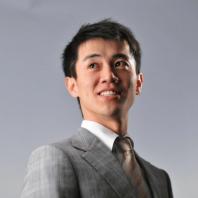![]()
![]()
Research Support Office Research Advancement Division. Tokyo University of Agriculture and Technology
| TEL | +81-42-367-5944 |
|---|---|
| FAX | +81-42-367-5946 |
This program is supported by MEXT’s scientific technology human resource development fee grant, "Program to Disseminate Tenure Tracking System".
Home > Introduction of our tenure-track faculties > Kim Sanghong

Kim Sanghong

| Affiliation | Institute of Engineering |
|---|---|
| Division | Division of Applied Chemistry |
| Research field | Process systems engineering |
| Keyword(S) | Process data analytics, process modeling, process control |
| Url | https://web.tuat.ac.jp/~sanghong/ |
| Research experience | ・Apr.2014-Feb.2021:Assistant Professor Dept. of Chemical Engineering, Kyoto University |
|---|---|
| Educational background | ・Mar.2009:B.S.Dept.of Chemical Engineering, Kyoto University, Japan |
| Awards | 2012:Research Award for Young Investigators of the Institute of Systems, Control and Information Engineers |
| Selected papers and publications | ・Sanghong Kim, Manabu Kano, Hiroshi Nakagawa, Shinji Hasebe: "Estimation of active pharmaceutical ingredients content using locally weighted partial least squares and statistical wavelength selection", International Journal of Pharmaceutics, Vol. 421, No.2, pp. 269–274 (2011) |
Research in process systems engineering can be classified as follows.
Modeling: To describe the behavior of a target process with mathematical equations.
State monitoring: Understanding the current state of the process based on the model.
Simulation: To predict the future of a process based on a model.
Control/optimization: To make the future situation desirable.
An example of modeling is soft-sensor design based on statistical data analysis of process data. In the process industry, it is required to produce products that meet quality requirements. However, it is not always easy to measure the quality in real time. This is mainly due to the high cost of measurement equipment and the time required for the measurement itself. In some cases, the frequency of measurement is not sufficient. Soft-sensors are used to estimate variables that are difficult to measure from those that can be measured in real time. The name “soft-sensor" comes from the contrast with sensors that measure directly by hardware. However, it is difficult to strictly distinguish between soft sensors and hard sensors. In this paper, we refer to regression models based on process data. A typical application of soft sensors is in distillation columns, where they are used to estimate product composition based on temperature, flow rate, and pressure. Soft sensors have also been used in a wide range of other industries such as pharmaceuticals, steel, and semiconductors. In this research, we are developing and applying a method for designing highly accurate soft sensors.
I feel that the support in terms of funding, space, and administrative procedures is generous. There is a mentor system, and I appreciate that I can get advice from mentors from various viewpoints. It is also attractive that there is an exchange meeting among tenure-track faculty members.
I want to enjoy all of my activities, including research, teaching, and other activities.